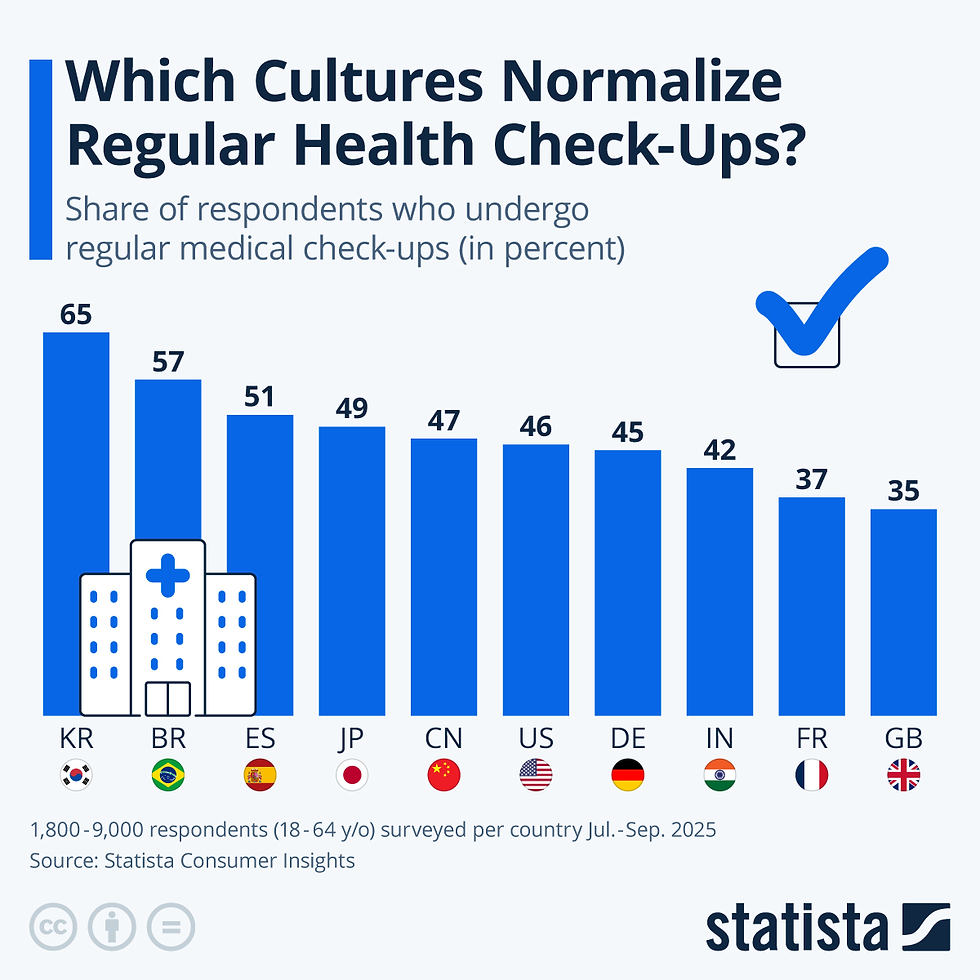How the Income of India's Richest 10% Surged
- raquelasg7
- Apr 3, 2024
- 2 min read
This article is published in collaboration with Statista
by Anna Fleck
The gap between the rich and poor is getting bigger in India. According to a new report by the research group World Inequality Lab, the per-adult pre-tax national income share of those in the 1 percent of the country's highest earners amounted to 22.6 percent in 2022, while that of the bottom 50 percent of earners stood at just 15 percent.
The following chart looks at income inequality dynamics in India between 1951 and 2022, with the population split into the bottom 50 percent, middle 40 percent and top 10 percent of the country. It shows that inequality declined post-independence until the 1980s, with the share of national income going to the top 10 percent dropping from 37 percent in 1951 to 30 percent in 1982. The report writers say this decline was likely the consequence of the “broadly socialist policy agenda pursued by the Indian government till the 1980s”, citing the nationalization of rail, air, banking and oil sectors, as well as strong regulation of markets and high tax progressivity. They explain that from the early 1980s, the Indian government then started to introduce a broad range of economic reforms that led to liberalization in 1991. With this, the top 10 percent's share started to increase, hitting nearly 60 percent from around 2016 onwards.
The middle 40 percent of the nation had received a share of national income that was higher than that of the top 10 percent up until the 2000s. That was until 2001, when a switch then took place, as the middle 40 percent received 38.9 percent of total income and the top 10 percent received 41 percent of total income. By 2022, this diverging path had come to 27.3 percent for the middle 40 percent and a high 57.7 percent for the top 10 percent. Reasons for the shares of lower income brackets remaining depressed include a “lack of quality broad-based education, focused on the masses and not just the elites”, as well as India’s inability to “pull more of its workforce away from agriculture".
The writers of the report add: “The "billionaire raj" headed by India’s modern bourgeoisie is now more unequal than the British Raj headed by the colonialist forces. It is unclear how long such inequality levels can sustain without major social and political upheaval. While there is no reason to believe income and wealth inequality will slow down by itself, historical evidence suggests that it can be kept in check via policy. Implementing a super tax on Indian billionaires and multimillionaires, along with restructuring the tax schedule to include both income and wealth, so as to finance major investments in education, health and other public infrastructure, could be effective measures in this regard.”
Start leaning Data Science and Business Intelligence tools:
createandlearn#analytics#dashboard#finance#accounting#tableau#powerbi#excel#sales#datascience#businessintelligence





























Comments